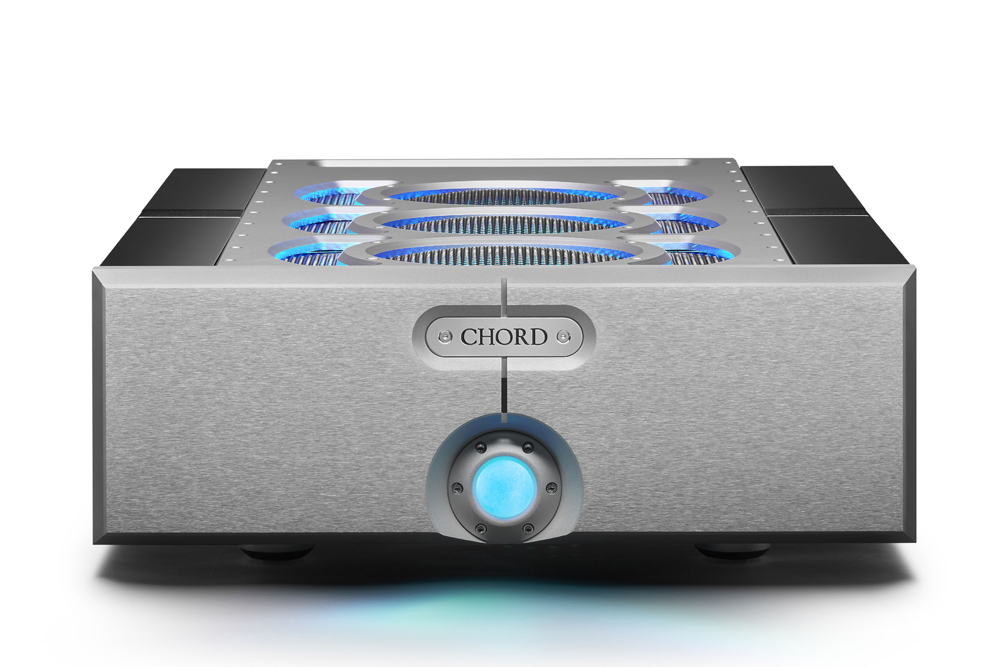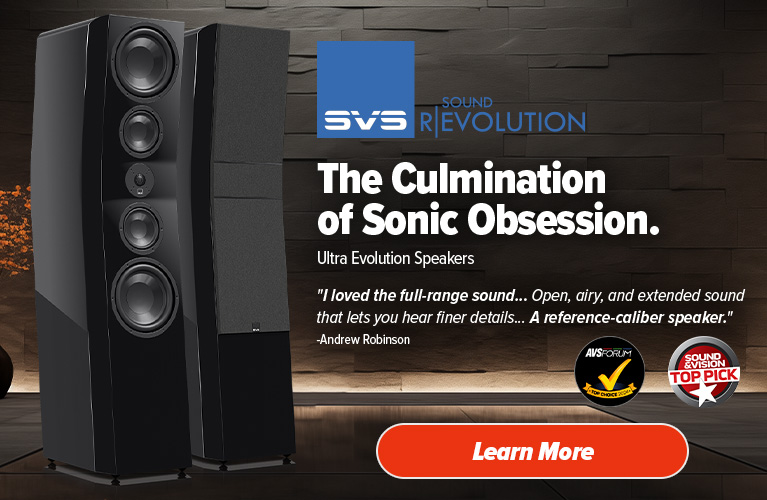For the last few years, Chord Electronics has had a relentless limelight-follow-spot firmly set on its every move in the digital-to-analogue converter space. ‘Tapped’ to ever-escalating numbers, Chord’s FPGA formula has advanced the company to one of the leading positions in digital technology, with its latest DAC products – and the tricked-out M Scaler – receiving a veritable pouring of appreciation from gratified users. The audio press has heaped nothing but the highest praise too, while from stage-left we imagine the competition glaring with covetous squints. Now, with the new ‘Ultima’ line of high-end amplifiers, and with the Ultima 2 monoblocks as the subjects of this review, Chord Electronics has its sights firmly set on the ne plus ultra.
The Amps are Lit
The Ultima 2 amplifiers arrived at Soundstage! Australia HQ in a massive roadcase on heavy duty castors. It’s a neat case design allowing the removal of the top third section to reveal a single monoblock which, once removed from its snug receptacle, allows the middle section to be unhinged and removed. Below that lives the second amplifier. It’s all super effective in terms of protection even if the two amps in conjunction with the very solid roadcase make for a rather large and weighty cargo. A few lifetimes ago, I ran a Pro audio business and I recall, less than fondly, the joys of ‘the load’. Lower. Back. Throbbing. Still…
Ultima 2 monos are a Class-A/B design supported by an in-house designed ‘High Frequency Switch Mode Power Supply’ (SMPS). Chord defines this type of Class-A/B configuration as having a ‘Sliding Bias’ circuit. During its stint at SSA HQ, the amplifiers barely got warm to the touch, even with our demanding speakers and through long listening sessions at healthy volumes. Each amplifier’s power supply is enormous and features some unusual engineering. Chord Electronics’ Founder John Franks offers a thorough explanation in the interview section a few paragraphs below.
The Ultima 2s are high power fully balanced amplifiers rated at 750 watts into 8 ohms with a quoted 0.05 percent distortion. Chord has given a massive figure of 1305 watts into 4 ohms. Output transistors are in-house designed MOS-FETs and there are 32 such devices in each monoblock amplifier. John Franks mentioned the power supply in each Ultima 2 mono features 24 capacitors for a supply bank totalling 64,800 uF each amp or 129,600 uF of capacitance for a stereo pair. “However it's all about Energy storage and they have a very high DC voltage across them in excess of 115 volts DC” Franks told me. He continued, “Additionally the charging rate is 1600 times the usual charging rate than would be coming from a typical power supply. These power pulses are at 80,000 Hz and they are coming from our three 4 kW custom Chord designed high frequency power supplies. The total stored energy is a staggering 0.8596 of a kilo joule.” Power to the people.
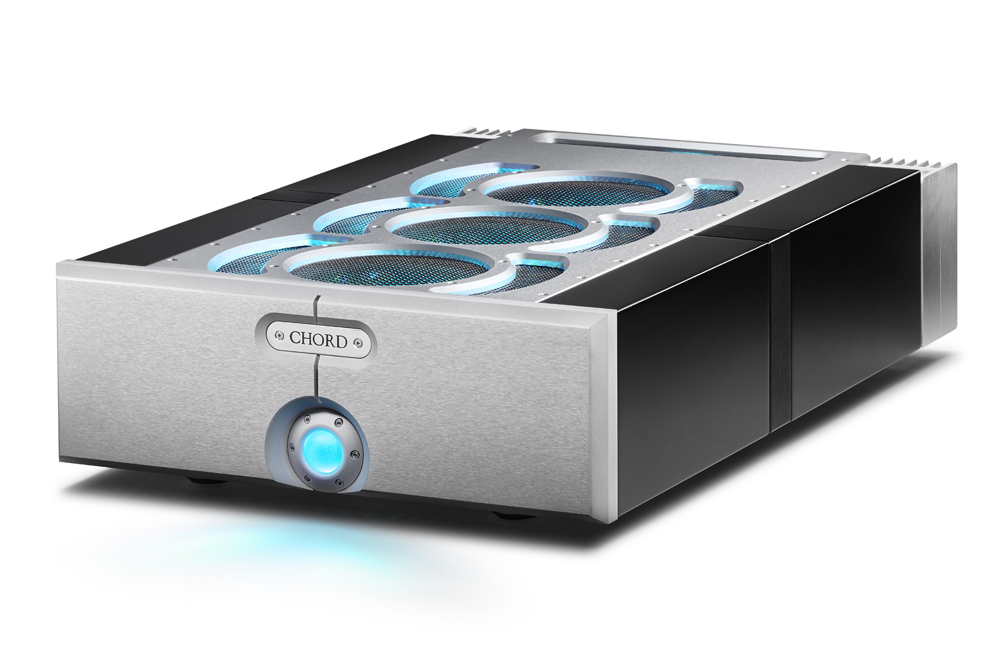
For further specifications, Chord provides a Frequency Response of -1dB from 0.2 Hz to 46 kHz and -3dB 0.1 Hz to 200 kHz. Signal-to-Noise is better than -89dB while Channel Separation is better than 90dB. The Ultima 2s are an easy match with any preamplifier – or DAC with volume control – via an input impedance of 100 kohms through both unbalanced and balanced connectors combined with a healthy gain of 30dB.
The Ultima 2 amplifiers reflect their upper tier station through every nook and cranny of their construction. Faultless finish, beautiful rather overt styling, immaculate assembly and a massive 28mm CNC-machined front plate all add up to provide a sense of confidence in what engineering may be contained within. And those styling comments are before powering the buggers up. Post AC, the amplifiers’ top panel’s circular grille-protected ‘Ring’ will greet you with an internal light show worthy of an Olympics Opening Ceremony. Well… as overstated as that may sound, regardless, I haven’t seen any other power amplifier adorned with this level of LED ‘blingery’. Having said that, Chord Electronics’ products have, for some time, used lighting and colour schemes to inform the user of various functions, status and feature sets. Here, they play a cosmetic purpose which, in my view, works quite well within the overall styling context. While on the lighting, an aspect that does have a function is the central semi-translucent polycarbonate sphere recessed in a machined well on the Ultima 2s’ fascia. Reminiscent of the spheres used in Chord’s M Scaler, Hugo, etc., it glows red when the amp is off and, once pressed, it fires-up the amplifier and subsequently settles to green during operation.
Oh, and there’s a little hidden secret should you be colour-shy. Set-in within a subtle vertical cut-out channel splitting the fascia’s top half, you’ll find an almost invisible little lever which can be toggled in order to dim the light show (you’ll need a business card or a pin to operate it) through three luminous intensities. Clever.
The rear panel, of course, houses the connectivity bay. There, within a central plate (the rest of the rear panel is all heatsink) you’ll find both single-ended RCA and balanced XLR connecting options. Unusually, Chord provides two of each type, one with correct polarity and the other with inverted polarity, the latter catering to some of Chord’s own components while also being an allowance for preamplifiers such as Conrad Johnson’s, for example, which invert their output. Two sets of high quality gold plated speaker binding posts are provided for bi-wired configurations while the connectivity is rounded out by a 12V trigger and a 15A IEC socket. AC power cable experimenters take note of that last item. The 15A socket’s three pins are configured differently and are of larger gauge as is the ground pin at the plug end. There are a number of cable specialists that offer suitable 15A to 10A cables or you could use the cables Chord provides, however, you’ll need 15A wall socket outlets.
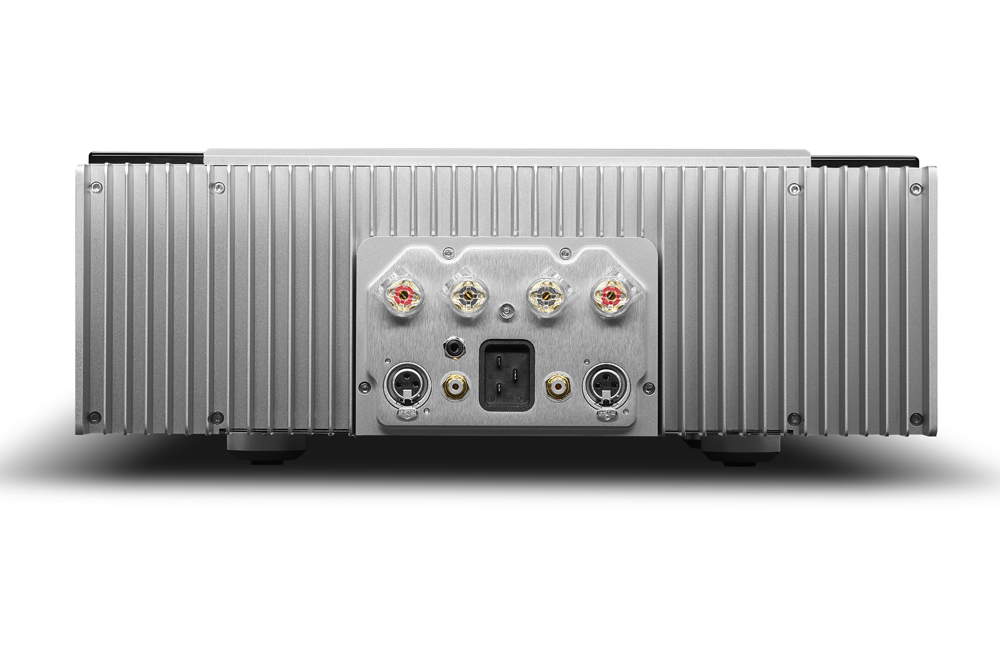
The Ultima 2 monoblocks are available in silver or black aluminium finish. A neat option is the availability of either an elegant polished black acrylic side panel set or Chord’s ‘Integra’ stackable leg system which itself has a number of finish options and, of course, allows the monos to be stacked if space is a concern.
I wanted to get some personal perspective from John Franks regarding some of the ideas behind the Ultima 2 monoblock amplifiers. Franks’ low-down:
The Ultima has been designed for the very best of large stereo systems which often have the most demanding and difficult to drive loudspeakers. Earlier this year, following an extensive period of research and development, we announced our new Etude compact amplifier. We were pleased to show off a totally new topology, the first major change in many years. Based on a paper presented many years ago by Malcolm J. Hawksford the concept was taken up and refined by a young Bob Cordell from Bell Labs.
Cordell put forward a small 50 watt amplifier design which had an unprecedented 0.001 percent total harmonic distortion right up to 20 kHz. I looked at his work from back in the 1980s and I developed our first design that incorporated not only the amazing dual feedforward error correction topology but our own advanced MOS-FETs and concepts in ultra-high frequency power supply technologies. With nested feedforward and global feedback it allows for our own custom designed Dual Silicon Die MOS-FET output transistors to perform uniquely well. However, on our far larger amplifiers we have opted for many multiples of specialised TO3 Metal case types. These are ideally suited for very high power having extremely robust metal cases. Each custom transistor device has been designed for Chord having dual Silicon Die. These are the actual metal on silicon power FET chips, these have been mounted on an unusually thick Chord-designed copper inner base plate to share the heating effect between each chip. This approach for power devices comes from my background in aerospace and is capable of controlling 16 amperes at up to 260 volts of flowing electrical current.
And the topology of the Ultima 2 itself?
It can be said that most well designed amplifiers’ performance is ultimately limited by their output stages. This is why we have invested in the best possible output devices and an advanced compensating technology that serves to bring the fastest, most linear and most accurate output there is. The new Ultima Mono design enables these specialised Chord MOS-FET power transistors to be continuously monitored and corrected for in several important areas such as their control gate transconductance, thereby allowing unprecedented performance in the critical crossover region where the N channel devices handling the top half of the music waveform hand over to the P channel devices for the negative part of the music or test tone waveform. Having gained some experience with this wonderful technology on the medium scale with our Etude Amp and realising its significant benefits, we started work on a replacement for our range of large scale mono amplifiers.
The Ultima 2 has 32 power devices that demand the most highly advanced and refined drive circuitry. This driver circuitry is operated from boosted rails exceeding 250 volts DC or more accurately +\- 125volts. These ultra-high voltage rails enable the drive voltage to swing signal voltages with significantly greater extents than the power FETs themselves. The drive circuitry features ultra-low distortion high voltage and very high speed, 300 volts per microsecond technology. We use our own Chord Electronics TO3-style dual die lateral matched MOS-FETs which are continuously monitored with output stage error correction circuitry. It’s a fully balanced input circuitry with DC tracking servos and full temperature compensation.
Three totally independent Chord-designed ultra-high frequency 4 kW burst, 2 kW continuous power supplies. These ultra-low emission types have advanced cross coupling power rails that negate ground pulling effects of the huge circulating currents associated with huge voltage and current swings of the amplifiers’ output.
The input stages are dual high speed buffer high performance operational amplifiers followed by an integrating low gain, low noise operational amplifier with DC servo feeding one side of a very fast high voltage long tailed pair differential amplifier. Class-AB and Class-B designs do have an Achilles Heel, although they’re far more efficient than typical Class-A designs. However, this is where the typical and well documented crossover distortion is normally generated. The two additional locally-situated extra error amplifiers assist the overall global feedback in virtually eliminating any significant nonlinearities associated with the half cycle transfer of power between the positive going and negative going output stage FETs.
Usually in a normal regime for a well performing typical MOS-FET amplifier current would be around 150 ma per pair of FETs which would equate to 4.5 Amperes if we followed the usual practice. This would have led our large mono to have a continuous quiescent power dissipation of over 1.1 kW with no input signal. However, we have through the Hawksford /Cordell error amplifier technology and our special own brand MOSFETs, been able to reduce this standing current right down to just a few milli-Amperes in each pair of output devices so our Ultima 2 runs just barely warm to the touch when not in use.
This is an extremely high current design and what differentiates the Ultima 2 is the speed at which these dynamic peaks can be delivered. Driving highly reactive loads fast, the Ultima can drive square waves to 50 kHz into reactive loads such as 0.5 ohms and 2 micro farads in series. The Ultima is an unprecedented design of exceptional performance.
That we shall see, or should I say hear, Mr Franks…
No Fear
The amplifier arrived in for review a couple of weeks prior to the release of the new Tool album, Fear Inoculum. While during those two weeks prior I played a variety of material, discovering the considerable powers of this stunning mono team, it was when Fear Inoculum was safely downloaded to my Roon server that I irrefutably confirmed a couple of their strongest qualities.
As far as modern ‘Alternative’ recordings go, it doesn’t get much better than Fear Inoculum. The Ultima 2s grabbed and held in total control my Wilson Alexia 2s’ twin-woofer’ed arrays providing stunning bass detail and tightness. It was a speed thing too, a term that may not be a good technical expression but is certainly a strong descriptive one. It was bass that pounded, was fleet-footed and drove the music along. And when Danny Carey hammer-rolls across his entire tom-tom grouping (and it sounds like quite the spread), the Ultima 2s do not, in any way, smear such difficult-to-reproduce passages. It’s all expertly unravelled and, therefore, super-enjoyable. Ditto for the snappiness and attack of the well-recorded snare, another driving aspect of the music which cuts through without swamping over Maynard James Keenan’s vocals. Yes, because it’s this superb separation which stands out too, but in a way that I’ve seldom experienced before and only with the very best amplification: it’s a rare mix of stunning resolution with inherent smoothness and textural richness.
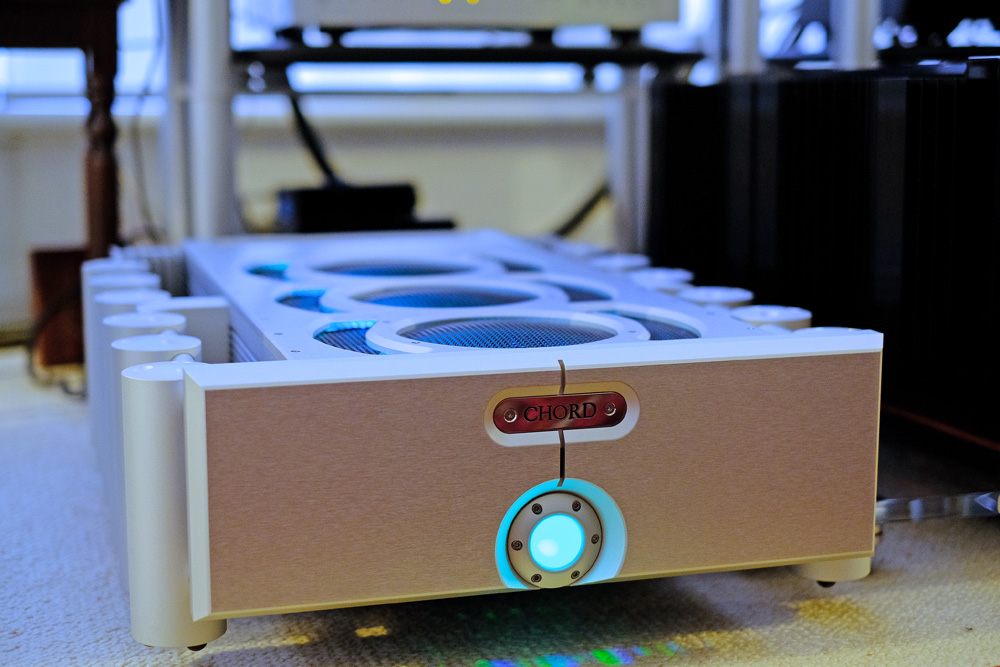
And here’s where the term ‘smoothness’ needs some further description. Solid state amplification is often clichéd into a grouping that, at its most hackneyed, summarises it as being “bright”, “congested”, “lacking tonal truth/texture”, etc. While that may indeed be the case with some products – with the same being possible via valve amplification – most well-designed modern solid state has dealt with those issues quite thoroughly, to be honest. Having said that (hitting a clichés for the purpose of strong illustration… yes, I know I’m being part of the problem right now), the purity of tone and delicacy of low-level detail retrieval puts the Ultima 2s on par with the best of valve amplification. Add to that the brutal power of 750 watts and you have some well serious amplification right there.
Both for pleasure and as a superb review tool, I often use Curandero’s Aras CD. In particular the titled opener, “Segue” and “Flirtatious”. Through the subtleties of Burhoe’s finer percussion effects (he uses all sorts of instruments), Espinoza’s nuanced acoustic guitar runs and the often whispered vocals, Ultima 2s demonstrated their vast resolution strengths. Ultima 2s’ thoroughly ‘black’ background – an intensely inherent quietness – allows every low-level intricacy to be fully realised. There were brushed strings, breaths, incidental deft touches that the amplifiers presented without forcing or overtness. What we have here is just natural sound reproduction easily, and holistically, presented as part of the music. Only the very best amplification, of any technology, can integrate those aspects so liberally.
Big orchestral works benefitted from all of the above in addition to the boundless amounts of raw power for the most demanding of crescendos. With the duo of Ultima 2s and the equally powerful Wilson Audio Alexia 2s, the grandeur of Strauss’ Also Sprach Zarathustra as conducted by Semyon Bychkov with the Concertgebouw Orchestra Amsterdam was magnificent. And not just in terms of sheer dynamism but also by presenting a massive soundfield that seemed to envelop me all around the listening position.
As the intensity of the ‘dawn’ intro grows, the organ, tympani and brass section swell to a devastating sense of… glory. The dynamics are scary and given appropriately matched speakers (in terms of their dynamic capabilities), the experience can be emotionally powerful. This is truly one of the greatest pieces of classical music, made ‘popular’ (and sadly, often caricatured) via Kubrick’s masterpiece film 2001: A Space Odyssey.
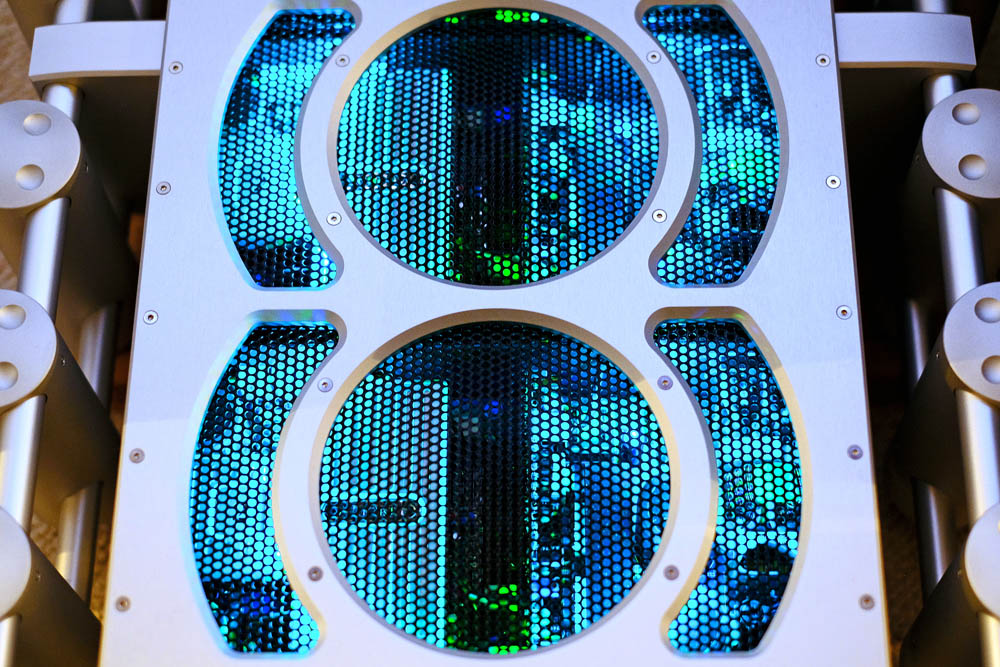
I was taken by Wilco’s “American Kids” from the Wilco Schmilco album where the Ultima 2s played the track with a satisfying sense of ‘body’ and presence to the acoustic guitar while the drumming and general instrumentation on the track was clean and resolute. Singer Jeff Tweedy stood with appropriate height and locked-in tight in terms of image placement.
All three versions of Dave Brubeck’s Take Five I own – AIFF file, Sony CD and the venerable vinyl copy in surprisingly good nick for its age and use – sounded recognisably different from format to format and consistently superb. The title track’s classic drum solo was phenomenally punchy, with both the kick drum and toms showing tight control and excellent ‘skin’ detail. Ditto with the well-recorded snare drum which Joe Morello uses sparingly yet extremely aptly. The sax has that intrinsic air pressure signature, the reed sound that requires excellent resolution in order to be both balanced within the context of the instrument’s sound and the overall music. The track – and indeed the entire album – just boogies along showing the Ultima 2s’ refined pace and transient attack skills. The piano possesses superb tonality and decay, the Ultima 2s’ extended bandwidth handling the instrument’s harmonic richness on par with the best Class-A amplification I’ve heard.
Conclusion
Few would argue that Chord Electronics is at the cutting-edge of digital-to-analogue conversion technology. In fact some would pontificate that team Franks/Watts has frog-leaped Chord Electronics’ competitors with industry-leading proprietary FPGA technologies. Now, this sophisticated and thorough engineering approach is carried through to the new line of Ultima amplifiers.
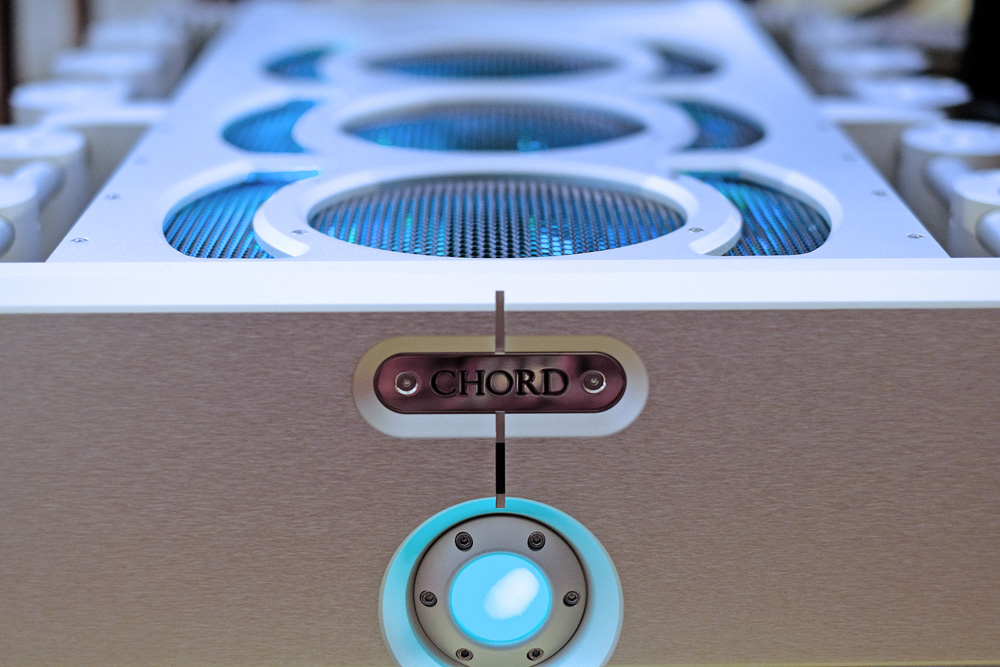
The Ultima 2 monoblocks are beautifully styled (even with, or because of, the visual pyrotechnics that emanate from within) and superbly built. Most importantly, they are highly advanced in terms of the circuitry, engineering and execution; ingredients that often – but not always – translate to excellent performance too.
The Ultima 2 monoblock amplifiers are at the technical bleeding edge and, in the realms of audio quality, they’re orbiting at the exciting outer frontiers. Money-no-object, you’re only one decision away from a totally enlightening sound experience…
… Edgar Kramer
This email address is being protected from spambots. You need JavaScript enabled to view it.
Associated Equipment
- Speakers— Wilson Audio Alexia Series 2, Axis Loudspeakers VoiceBox S (nearfield monitor), Vermouth Audio Little Luccas Mk.II
- Amplifier— Gryphon Audio Antileon EVO
- Preamplifier— Supratek Cortese, Lightspeed Attenuator LDR passive
- Sources— Digital: Yamaha CD-S2100 transport, Chord Electronics Hugo M Scaler, Totaldac d1-core DAC, Asus PC as Roon Core. Analogue: Michell Engineering Orbe with Gert Pedersen Level 3 modifications and Origin Live Ultra upgraded motor, Trans-Fi Terminator air bearing linear-tracking arm, Shelter Harmony cartridge, Supratek Cortese & REDGUM Audio RGPH2 phono stages
- Processor— DEQX PreMate
- Cables— sILENzIO loom, Vermouth Audio Black Pearl Mk.II loom, Vermouth Audio Reference loom
- Audio Rack— SGR Audio Statement Model V
- Miscellaneous— Les Davis Audio Viscoelastic CLD discs, VRC Vinyl Record Cleaning system
Chord Electronics Ultima 2 Monoblock Amplifiers
Price: AU$39,990 each
Warranty: Five Years
Australian Distributor: Radiance Audio Visual
+61 (0) 2 9659 1117
www.radianceav.com.au
Chord Electronics
The Pumphouse, Riverside Park, East Farleigh
Maidstone ME16 9NB
United Kingdom
+44 1622 721444
www.chordelectronics.co.uk






